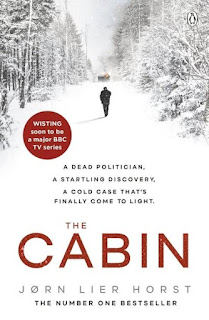My review of Castle Freeman's
Come With Me was originally published at Crime Time, but if you hit the link to it I left in 2009 here at IT, it's dead. So I thought I'd reprint the review now. I had been looking for it because I discovered that it had been made into a 2015 movie, called Blackway, directed by the Swedish director Daniel Alfredson, who did the second two films of the Dragon Tattoo trilogy. I was curious, and I wanted to be reminded of the book before I searched out the film. I'll preface my review of the book with my original Irresistible Targets intro.
Although the story moves along somewhat predictable lines, and though
some of the characters are telegraphed by their names, it is the quality
of the prose, particularly the dialogue, which makes it work. The
quality of Freeman's seemingly simple northern New England prose, and
the sharpness of the unsaid within his characters' conversations, makes
this a formidable work: a modern Deliverance set in Vermont. What it has
that Deliverance didn't is humour: and again this is something of the
old New England wryness (the kind of irony Americans are not supposed to
possess, according to received wisdom in this country) that I first
encountered on the page in The Real Diary Of A Real Boy, by Henry Shute,
one of my favourite books when I was a child.
Interestingly,
one of the dailies (oh, go on, it was the Guardian) reviewed this book
and thought Freeman was a woman. That's nowhere near as bad as the guy I
heard on Open Book once talking about Flannery O'Conner as a man, but
it does show you how fine-tuned his prose is, as well as revealing what
critics sometimes assume about such prose. Actually, although the main
character is a woman, the narration is pretty obviously in a male, New
England male, Vermonter voice.
COME GO WITH ME (THE CRIME TIME REVIEW, 2009)
When
Sheriff Ripley Wingate finds a woman asleep in her car outside his
office, early in the morning before most of his Vermont town has
risen, he listens to her story and sends her away. The
woman is being stalked by a man called Blackway, who has just slit
her cat's throat. She refuses to run away from him, but there is
nothing the sheriff can do, except send her out to the old sawmill on
Dead River, looking for someone who might be able to help. And when
that someone turns out not to be there, the men gathered around the
pot belly stove call in the only two men working, old Lester Speed
and the simple young giant, Nate the Great. They head off in
search of Blackway, and little by little we learn that the woman's
name is Lillian, that Blackway has scared her former boyfriend out of
Vermont, and that Blackway is not one with whom you trifle.
This
might not sound like the most engrossing of plots, but the beauty of
this book is in the slow crafting of the story, almost exactly the
way stories are told around the stove in the sawmill. That mill is
run by Alonzo 'Whizzer' Boot, so called because he's confined to a
motorised wheelchair, and the small circle of men, like most of the
people in this novel, have nothing much to do, certainly nothing
legal. 'No one works,' the sheriff muses at the start of the novel,
not like the days of hard-scrabble farming and Yankee grit. It's a
circle closed to outsiders, like Lillian, often called 'flatlanders'
by the locals, and her journey with Lester and Nate is, in its way,
an initiation to the realities of the area to which she came, viewed
with amused detachment, but now, if she is going to stay, to assuage
her stuborness, becomes a life of which she must learn to become a
functioning part.
It's
a domestic sort of Deliverance, with Lillian's quest counterpointed
by the hot-stove chatter of the men. Freeman, who writes for Yankee
magazine, an eccentric reading tradition in Northern New England, has
a fine feel for the local talk, for the way outsiders are excluded
from it, and for the traditional, if somewhat stereotypically
cliched, crafty logic of the people. But what really makes the novel
work is its sense of timelessness, in being somehow caught out of
time. There are hints that it is being narrated from the present,
talking about the past, and others that this is very much the
present. But Freeman, perhaps feeling a bit unsure if the audience
gets this dislocation, has one of the characters around the hot
stove, Conrad, who is the outsider in the group, having married into the town,
explain it all. He tells his wife he feels like they are sitting
in a rocket ship, travelling at the speed of light, so that 'time
doesn't pass for them. Time stretches. It stretches or it shrinks. Or
something. They're out of time, you know?' And his wife says 'No,
Einstein...I don't have any idea what you're talking about and I
don't think you do either.' Though she knows enough to know it's Einsteinian, whatever it is. And Conrad, showing how much he's
assimilated, says 'That's possible too'.
This
is a finely written book that only gradually becomes a thriller, and
all the while it is essaying something that we may have, indeed, lost
forever. Freeman can muse, in a coda, about what this new world is
like, but for the short ride of these 160 pages, he enthralls you
with the old world. A small marvel.
Go
With Me
Castle
Freeman
Duckworth
Overlook 2009, £7.99, ISBN 9780715638354




















